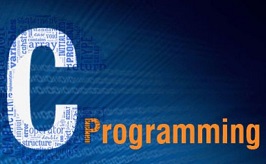PRO-301-A: Structured Programming Using C Language (age 15 and above)

General Information
- Course schedule and timing will be decided once the class is complete.
Prerequisites
1- Fair knowledge of English Speaking.
2- No previous programming knowledge is requiired.
3- Windows PC or laptop
4- Internet connection
Course Description
The C Language has proven to be an expressive and versatile language for a wide variety of applications. This course will help you to program in C. Even though it is an introductory course, it will put your feet on a solid ground of various programming concepts, where you can use them to logically solve various problems.
Course Aim
The course aims at showing the essential elements of C programming language, so the candidate can get quickly at the point where he can write useful programs. To achieve this, we focus on the basics such as variables, arithmetic and logical operations, arrays, and functions. We also present programming concepts which pave the road to build correct programs.
Course Objective
By the end of this course, student should be able to:
- Understand and use basic programming constructs of C language.
- Manipulate various C data types, arrays, and functions.
- Use loops and selection structures.
- Isolate and fix common errors in C programs.
Introduction to C Programming
-
1Understanding CompilerCompiling is the transformation from Source Code (human readable) into machine code (computer executable). you will learn how a C source code is compiled and executed in very simple steps.
-
2Introduction to Visual StudioMicrosoft Visual Studio (VS) is an integrated development environment from Microsoft. It is used to develop computer programs. You will learn how to install and configure it. VS is the development IDE that you will use through this course.
-
3The structure of a C ProgramYou will learn how C code looks like. This include the understanding of header files, macros, the "main" function, and more...
-
4Data typesThe type of a variable determines how much space it occupies in storage and how the bit pattern stored is interpreted. You will be introduced to basic data types such as char, int, float, and double. you will know the differences between them and how they are treated during program execution.
-
5Arithmetic operators and their precedenceArithmetic operators are used to perform mathematical calculations like addition, subtraction, multiplication, division and modulus in C programs. You will learn the different types of operators, how to use them, there precedence of execution.
-
6Logical operatorLogical operators are used to evaluate two or more conditions ; this includes AND, OR, and NOT operators. you will learn how they are evaluated, their precedence, and how they can be used to evaluate complex conditions.
-
7Input and Output statementsC programming language provides many built-in functions to read any given input and to display data on screen when there is a need to output the result. You will learn different input and output functions that you can use to format your input and output.
-
8Control of flow using selection statementsControl statements enable you to specify the flow of program control (i.e. the order in which the instructions in a program must be executed). They make it possible to make decisions, to perform tasks repeatedly or to jump from one section of code to another. You will learn how to use IF, IF ELSE, and switch statements.
-
9Loop statementsLoops are the statements execute one or more statement repeatedly several number of times. In C programming language there are three types of loops; while, for and do-while. You will learn how to use them, their differences, and when is it better to use each of them.
-
10FunctionsA function is a block of code that performs a specific task. you will learn about the function declaration, which tells the compiler about a function's name, return type, and parameters, the function definition that provides the actual body of the function , and the differences between user defined and built-in functions.
-
11ArraysAn array is a collection of data items, all of the same type, accessed using a common name. you will learn about the one dimensional array, how to declare it, how to access it, and how to integrate it within loops an "if" conditions.



